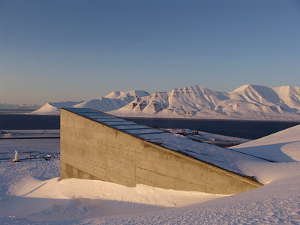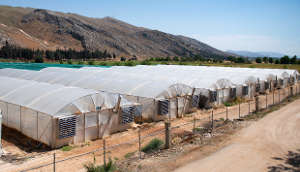Using AI to control energy for indoor agriculture
30 September 2024
Published online 10 November 2020
International collaborations rescue a seed heritage from the ravages of war.

Global Crop Diversity Trust
Seed banks are rich repositories of biodiversity that are vital for safeguarding future food security, particularly in the face of climate change.
The International Center for Agricultural Research in the Dry Areas’ (ICARDA) seed bank represents the largest collection of crop diversity from the Fertile Crescent, the region where agriculture first evolved. It contains thousands of wild relatives of staple food crops, such as wheat, barley, lentils and fava beans. The seed samples, or ‘accessions’, are available free of charge to plant breeders and researchers around the world under the Plant Treaty framework, giving them access to the genetic traits that could help other crops around the world withstand drought, heat and pests.
The collection was previously held entirely in Syria, but was in danger of being lost when civil war broke out in March 2011.
The collection was saved by an early decision to send seeds for safety duplication at the Svalbard Global Seed Vault, often referred to as the doomsday vault for the world’s seeds. The vault is located on a Norwegian island inside the Arctic Circle and buried more than 100 metres inside the Platåberget mountain, surrounded by permafrost and thick rock.
ICARDA was among the first depositors when the vault opened in 2008, and managed to duplicate more than 80 percent of its seed collection by the time the last staff were forced to leave Tel Hadia, Syria in 2014 because of the war. The extraordinary efforts of ICARDA staff, who managed to catalogue the collection, prepare, and send duplicates out of Syria in the midst of conflict, have been hailed internationally and earned them the Gregor Mendel Innovation Prize in 2015.
“Safety duplication is one of the pillars of gene bank management. It’s like an insurance policy. We didn’t set out, per se, to protect the seed bank in case of political instability back in 2008,” says Zakaria Kehel, head of genetic resources, pre-breeding and gene bank operations at ICARDA, Morocco. “But as it turns out, it was very good that we began depositing the seeds back then.”

Michael Major/Crop Trust
Researchers say1 the retrieved seed samples have been replicated in large numbers to produce fresh seed for the reconstruction of active and base collections as well as for distribution. Fresh safety duplicates have also been returned to Svalbard.
“The story about safeguarding the ICARDA collection at Svalbard illustrates the importance of multilateral collaboration,” says Ola Westengen of the Norwegian University of Life Sciences, who emphasises that all countries and regions of the world are interdependent when it comes to genetic resources. “Without the Plant Treaty, we would not have the atmosphere of trust and rules for international collaboration to safeguard this valuable natural resource.”
Westengen adds that, at the technical level, maintaining and regenerating such huge collections of genetic resources is challenging. “ICARDA’s ability to regenerate and multiply 30,000 seed samples annually since retrieving the back-up samples from Svalbard is very impressive.”
Regenerating seeds in bulk requires an increased capacity in irrigation, threshing, temporary storage, seed health testing, seed processing, viability testing, drying and packing, among others. ICARDA Lebanon now has one of the world’s largest facilities to meet these needs.
Returning accessions from the Svalbard vault to Lebanon and Morocco in order to reconstruct the entire ICARDA collection could take until 2030 or beyond, depending on funding.
Rebuilding ICARDA’s seed bank in the Middle East makes sense, Kehel explains. “That’s because of the ready access we have to endemic species and their regeneration in their natural habitat, and because of logistical reasons. It was easy to move our experienced staff from Aleppo to our new headquarters in Lebanon. The help we get from governments in terms of facilities and funds is critical, and it’s also important for us to be close to clients and gene bank users in the region.”
The biggest challenges ahead, he says, will be “to continue with intensive regeneration to make the collection available for local and global distribution and for safety duplication, and to continue developing the capacity of our teams.”
doi:10.1038/nmiddleeast.2020.118
Stay connected: